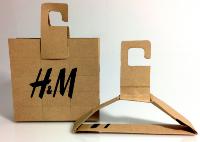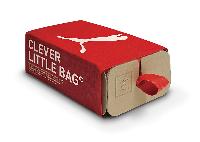It's not just inside—but also what's outside—that counts
As consumers, we are constantly bombarded with messages of products and services up for purchase. Choosing which ones to select is overwhelming enough as it is, but as inhabitants of Planet Earth, we have a heightened responsibility to make sure these choices are also eco-friendly.
The sustainability space is always evolving, with new materials and advancements being developed and existing harmful materials being banned, so it’s important as both consumers and producers to do the best we can to keep informed and make green choices.
Our spending decisions must consider the entire life cycle of the product—from design to packaging to shipping and beyond. Packaging is often the first thing we see when making a purchase, so in this case we must judge a book by its cover and select the exterior that is as sustainable as possible.
What is eco-friendly packaging?
Eco-friendly packaging, also known as green or sustainable packaging, consists of materials in packing and shipping products that leave as minimal of an environmental footprint as possible—in other words, the packaging doesn’t harm our environment or contribute to the depletion of our natural resources. The ideal type of packaging is made up of 100 percent eco-friendly or recyclable materials; has energy-efficient and ethical production; and is able to create a closed-loop packaging economy.
The Sustainable Packing Coalition (SPC) is a great resource for guidelines and information on what counts as sustainable packaging. According to the SPC, packaging is considered sustainable if it meets the following criteria:
- Is beneficial, safe and healthy for individuals and communities throughout its life cycle
- Meets market criteria for performance and cost
- Is sourced, manufactured, transported and recycled using renewable energy
- Optimizes the use of renewable or recycled source materials
- Is manufactured using clean production technologies and best practices
- Is made from materials healthy throughout the life cycle
- Is physically designed to optimize materials and energy
- Is effectively recovered and utilized in biological and/or industrial closed-loop cycles
What to look for in eco-friendly packaging
ECO-FRIENDLY MATERIALS
Eco-friendly packaging includes reusable, recyclable, renewable, compostable and/or biodegradable materials that break down into non-toxic, organic matter, or can be recycled. They can also be reusable materials where they go on to serve another function after the packaging has been opened. To identify these materials, it’s important to look at their life cycle: will it end up sitting in a landfill after use? Will it decompose to release toxins that could harm our planet or those who live on it? Or will it go on to serve another, unharmful purpose?
Here are some examples of eco-friendly packaging materials:
- Compostable, biodegradable, all-natural or plant-based materials, such as packaging peanuts, corn starch packaging, seaweed packaging or mushroom, such as the biodegradable mycelium “fungi packaging” used by IKEA
- Biodegradable and bio-based plastic (used to make certain bags, envelopes, bubble wrap)
- Recyclable material such as corrugated cardboard and paper (bonus point if it comes from a sustainably managed forest—some great resources are forest conservation group Canopy's EcoPaper Database, which lists paper companies that offer a high recycled content and Forest Stewardship Council-certified products)
- Reusable or multi-purpose products such as this shopping-bag-turned-clothes-hanger from H&M
 ECO-FRIENDLY DESIGN
ECO-FRIENDLY DESIGN
Beyond the materials themselves, it’s important to look at the way they are used to construct the packaging. Sustainable companies will prioritize the environment in every aspect of their design, packaging and shipping process, focusing on that closed-loop economy. They must design the package in the most efficient way while still minimizing the chance of the product getting damaged in transport (which would result in wasted materials).
Here are some things to look for in the packaging design:
- Compact packaging that eliminates extra space, keeping the package lightweight and lean to make for more fuel-efficient shipping
- Only packaging that is absolutely necessary, avoiding multiple hang tags, shoe inserts, additional brand information, excessive tissue, paper, plastic or metal to hold the product in place
- No individually packaged components unless absolutely necessary to reduce the damage rate
- Multi-functional package and designs that use the same package for retail and shipping, such as PUMA’s “clever little bag” which uses 65 percent less cardboard than the standard shoe box

SUSTAINABLE BRANDS
Sustainable brands are those that actively aim to reduce carbon emissions, eliminate single-use plastics and incorporate biodegradable or recycled packaging. Legitimate brands will usually be transparent about these values in the marketing and presentation of their products and services. These brands will also educate their customers on the eco-aspects of their products, including how to properly recycle their packaging or information about the decomposition process.
Words like “sustainable,” “green” and “eco-friendly” are often used as buzzwords, so it’s always a good idea to research the company to ensure they are backing up their words with sustainable actions, and educate yourself on what to look for when purchasing.
Instead of falling for a picture of a tree or the world “green” slapped on the packaging, look for specific wording stating that the packaging is made from 100 percent recycled, organic or all-natural materials, or specifying that the material will break down into non-toxic organic matter.
Many companies will showcase their certifications on the products, so look for labels with certifications like Energy Star (for energy efficiency), USDA Organic Seal (for organic products), Forest Stewardship Council (for products made from trees in responsibly managed forests), and Green Seal (for general sustainability).
What to avoid in the packaging contents
Non-eco-friendly packaging consists of materials that emit toxic pollutants or poisonous gasses that can harm our environment and the beings that live on it. These are materials that cannot be broken down by air, sunlight, water and ground soil, and instead, sit as waste in landfills or the ocean and produce greenhouse gasses.
Here are some examples of non-eco-friendly packaging materials:
- Styrofoam, also known as expanded polystyrene foam (EPS)
- Plastic (containers, bags, cups, bubble wrap, tags, and more)
- Single-use or disposable items
- Unnecessarily individually-packaged components
- Unethically sourced materials involving animal or plant products
As we all work towards making shifts in our lives for the betterment of our planet, packaging is a great place to start. It’s the first thing we see on the shelf: its purpose is merely to protect and present the product itself and it is typically discarded right after opening. By adding this layer of consciousness to the type of waste we are creating, we are one step closer to creating a more sustainable place to live.


